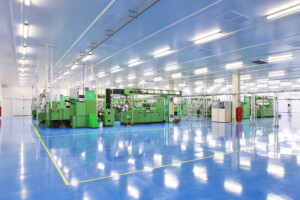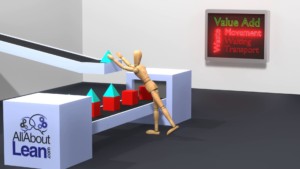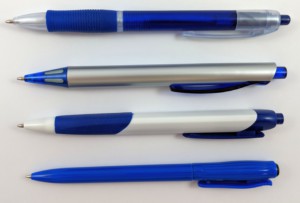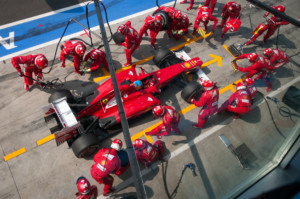 Putting your processes closer together in manufacturing obviously saves space. However, there are many more benefits of putting processes closer together. Let me give you a run down of the benefits:
Putting your processes closer together in manufacturing obviously saves space. However, there are many more benefits of putting processes closer together. Let me give you a run down of the benefits:
Efficiency
What Percentage Value Add to Expect for Manual Work?
 In my last post I described a quick-and-dirty approach to estimate the percentage of value add (i.e., the efficiency) of manual work. While the value is only an estimate, it is a measurement that you can take quickly and easily even in passing for a manual workplace. You simply count when a person is adding value and when not (i.e., waste). This post will look into more detail on what numbers to expect, and what to do next if you want to increase this percentage of value adding time. Let’s have a look:
In my last post I described a quick-and-dirty approach to estimate the percentage of value add (i.e., the efficiency) of manual work. While the value is only an estimate, it is a measurement that you can take quickly and easily even in passing for a manual workplace. You simply count when a person is adding value and when not (i.e., waste). This post will look into more detail on what numbers to expect, and what to do next if you want to increase this percentage of value adding time. Let’s have a look:
How to Estimate Value Add for Manual Work – How to See Waste!
 One of the necessary tasks in becoming leaner and improving your industry is to eliminate waste. I like to use a simple approach for measuring waste in manual work to know how good (or bad) the current situation is. To explain my approach I commissioned a few animations. Let me proudly present my approach and my animations, so you can also estimate the efficiency of manual lines when you are on the shop floor.
One of the necessary tasks in becoming leaner and improving your industry is to eliminate waste. I like to use a simple approach for measuring waste in manual work to know how good (or bad) the current situation is. To explain my approach I commissioned a few animations. Let me proudly present my approach and my animations, so you can also estimate the efficiency of manual lines when you are on the shop floor.
More Reasons for Working Less
 You probably hate long drudging hours working in the office and feeling really worn out at the end of the day. Maybe you’re sitting in an office working right now (and of course your reading my blog means you are working 😉 ), knowing that you will be worn out at the end of the day. This post is especially for you, looking at work hours and productivity. The good news is: Less is more, but don’t overdo it!
You probably hate long drudging hours working in the office and feeling really worn out at the end of the day. Maybe you’re sitting in an office working right now (and of course your reading my blog means you are working 😉 ), knowing that you will be worn out at the end of the day. This post is especially for you, looking at work hours and productivity. The good news is: Less is more, but don’t overdo it!
Diseconomies of Scale
How Cheap Can You Make it?
 I was on a quest, a quest to find the cheapest ballpoint pen possible. And what I found was amazing. Modern manufacturing has achieved stunning productivity, where even a complex product like a ballpoint pen can be produced at costs that were unbelievable only a few decades ago. While everybody can make a pen, the goal in manufacturing is always to make it cheaper! For the same functionality, the customer will almost always go for the cheaper products. Let me show you the results of my quest.
I was on a quest, a quest to find the cheapest ballpoint pen possible. And what I found was amazing. Modern manufacturing has achieved stunning productivity, where even a complex product like a ballpoint pen can be produced at costs that were unbelievable only a few decades ago. While everybody can make a pen, the goal in manufacturing is always to make it cheaper! For the same functionality, the customer will almost always go for the cheaper products. Let me show you the results of my quest.
On Running Changeovers
 Changeover times and their reduction are popular topics in lean manufacturing. In this post I would like to introduce the idea of running changeovers for production lines. The idea behind it is simple, and probably many of you do it already. Nevertheless, I have found little info on it online. I also would like to go into more detail on the benefits of a running changeover in comparison to the alternatives.
Changeover times and their reduction are popular topics in lean manufacturing. In this post I would like to introduce the idea of running changeovers for production lines. The idea behind it is simple, and probably many of you do it already. Nevertheless, I have found little info on it online. I also would like to go into more detail on the benefits of a running changeover in comparison to the alternatives.
The Phases of a Changeover

A changeover is changing the set-up of a process from one product to the next. Reducing changeover times is a common and popular way to decrease inventory or to increase available work time (see SMED). Ideally, the changeover time should be zero, allowing true one-piece flow. In reality, however, it is often not zero. This post looks in more detail at the different phases of a changeover to help you understand the process better and to reduce your changeover times.

